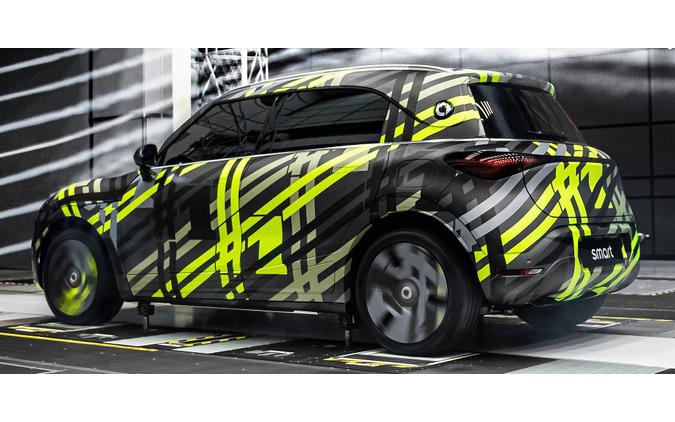(Photo: Response)

Smart Automobile announced on February 10 that the name of the next-generation smart EV will be "Smart # 1" (Smart # 1) and will be unveiled for the first time in the second half of 2022. Photos of the development prototype vehicle have been released. Photo: Prototype of Smart #1 ◆Using a combination of the "#" symbol followed by a number Smart will introduce a new model development system by renewing its brand, products and business model. Smart will expand its lineup as a premium EV brand. Smart #1 will be the first commercial model in the next-generation smart family. We have already completed aerodynamic and winter tests. Quality, performance and reliability are the result of close cooperation between Mercedes-Benz's global design team and Smart's engineering department. Smart has adopted a combination of the "#" symbol followed by a number as its next-generation EV naming scheme. The '#' symbol, which is used to indicate hot topics on social media, is said to reflect the trend of the digital age. Smart #1 boasts to attract customers in China and Europe and set a new trend in urban mobility. ◆Designed by Mercedes-Benz The China Automotive Engineering Research Institute in Chongqing houses the most advanced automotive aerodynamics testing center in China. Here, the smart #1 prototype was tested for aerodynamics and achieved a drag coefficient of 0.29. This is said to be at the top level when compared to competing SUVs in the same segment. Drag coefficient was emphasized in the development of Smart #1 because it affects vehicle energy consumption, cruising range, wind noise, and high-speed driving stability. Smart #1 balances aerodynamics with a streamlined form thanks to the design philosophy of 'Sensual Producty' by the Mercedes-Benz global design team. Hidden door handles and an effective aerodynamic package, the standard AGS (Active Grille Shutter) contribute to improved aerodynamic performance. Wind resistance and noise are also optimized, contributing to improved energy efficiency, comfort and range. -Driving test on ice and snow at a temperature of -40 degrees The winter test was conducted in an environment of around -40 degrees at one of the world's coldest proving grounds in northern China. We are proud to say that the smart #1 prototype has shown excellent durability even in extreme cold conditions. An advanced battery temperature control system keeps the battery in optimal working condition. In addition, it is possible to set the driving schedule in advance using the dedicated "Smart APP" application or the in-vehicle control panel, automatically preheating the battery, and optimizing charging and output efficiency. Meanwhile, the vehicle's door handles are equipped with an ice-breaking function, which works even when covered with a thin layer of ice. Smart #1 was also tested on snow and ice under conditions similar to those used in everyday winter city driving. The newly developed EV powertrain and Bosch's ESP system pursue steering stability, acceleration, and braking performance. Renewed in the digital age, the smart brand continues to pursue its vision of seeking optimal solutions for future urban mobility and co-creating with an avant-garde spirit. With Mercedes-Benz design and smart engineering, the all-new Smart #1 encapsulates the aim of smart and designs a smarter future.
Response Minoru Moriwaki
Last update: response
![Lenovo's 8.8 inch one-handed tab "Legion Y700" full specs released! [Is the price in the 40,000 yen range?]](https://website-google-hk.oss-cn-hongkong.aliyuncs.com/drawing/article_results_9/2022/3/9/207e1be231154e91f34c85b4b1d2126c_0.jpeg)
![EVsmart blog Toyota's electric car "bZ4X" that makes you feel comfortable with electric cars and quick chargers / No% display of battery level [Editorial department] Popular articles Recent posts Category](https://website-google-hk.oss-cn-hongkong.aliyuncs.com/drawing/article_results_9/2022/3/9/752542064665dc2bd7addbc87a655694_0.jpeg)

